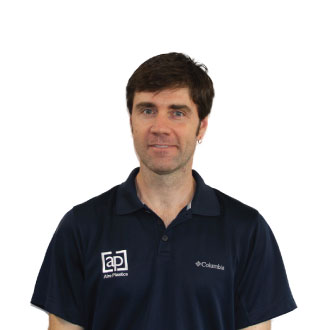PD12: The Product Development Process
Welcome to PD12: The product development process that we use and recommend. Aire Plastics has been in business since my dad started it in our garage in 1989. We’ve helped hundreds of independent inventors, product developers, and businesses large and small turn their ideas into packaged saleable products. And we’ve taken all that we’ve learned and refined it into PD12, a comprehensive system for product development that you can apply regardless of the type of material you’re using or the product you’re creating.
Video Intro to PD12
Product Development Process Definition
According to Wikipedia and every other business resource in the whole wide world, The Product Development Process “typically consists of several activities that firms employ in the complex process of delivering new products to the market.” I know… that doesn’t say much but it does mention “complexity”. So, we’re going to break it down and make it as simple as possible.
New Product Development: What’s Involved?
PD12 is arranged into two phases, each of which has six steps. The first phase is ideation, and the second is manufacturing. Both have their exhilarating moments and their downright frustrating moments, but wherever you are on the journey, keep this advice in mind:
- Follow all the steps. Taking shortcuts to save time or money (or just because a task seems annoying) will only result in you having to double back to do those things anyway—and can even spell disaster for your product.
- Keep at it! Product development is hard, but if you’re working with reliable experts and following the steps (see above) problems are rarely insurmountable.
What are the stages of the Product Development Process![]() ?
?
The Ideation Phase: Your First Six Steps in Product Development
You’ve decided to finally take that daydream and make it a reality. These are heady days, but you still need a process…and some duct tape. Here are your first six steps:
1. Ideation
Start by really thinking through your idea: Who is it for? What will it look like? Why is it better than what’s out there? Get it on paper, a Word doc, whatever. Just articulate your idea. Then, start drawing without worrying about making it pretty: dimensions, angles, lines, curves.
2. Validate your ideas
You can, in fact, do your own basic market research. Find people in your community who would be likely to use your product. What do they need, and how can your product help them?
3. Sketch to 3D models
Before you can make a prototype, you need a 3D model, which includes every view and dimension needed to make even a rough physical version of your idea. This needs to be accurate, so you need a developed concept sketch and—depending on your skill set—possibly a 3D modeler.
4. Prototypes
From that model, you’ll be ready to make a prototype. Maybe you just need some dowels and some duct tape, maybe you need multiple 3D-printed parts. In either case, focus on functionality. You can make it pretty later.
5. Test your prototype
This is the second and equally important step in your market research, also known as “set aside your ego, absorb all the information, and solve the problems.” You need to know how your target customer feels about this product. Does it address their needs? Does the product seem easy to use? Is it comfortable to hold? How much would they pay for it?
6. Repeat until ready for Phase 2
Let’s get started! Scroll down for more in-depth info, tips and resources for each step. >>>
The Manufacturing Phase: Your Next Six Steps in Product Development
The rubber hits the road here: You have a prototype for a viable product. Now you have to figure out how to get it made, where to get it made, what it should be made of, and a thousand other things. You should expect to spend some money and some serious time. But if you’ve come this far, you probably have the wind in your sails. The steps in this phase are written for plastics manufacturing, but their principles are universal.
In this phase, our advice above bears repeating: Follow all the steps, and keep at it! Here’s what you’ll be doing next:
1. Design for manufacturing
You now need someone to translate that prototype into a set of drawings—your design for manufacturing, or DFM. A manufacturer will rely on the DFM to produce your product with fidelity. NOTE: This is not your DIY moment. Find the right person, someone who has expertise relevant to your product and materials.
2. Tooling
This will likely be your biggest financial investment, but it’s arguably the most important: Without the perfect mold, you will not have a perfect product (you might not have a product at all). Do your homework.
3. Injection molding
Or “the parts get made.” It’s now up to your manufacturer to put your molds into action and create your product or the parts for assembly. The process is out of your hands now but, again, if you’ve gone through the right process you should soon see your product come to life as you envisioned.
4. Assembly and finishing
5. Packaging
6. Distribution and marketing
Now that we’ve got that down….Scroll down for more in-depth info, tips and resources for each of the steps in phase 2. >>>

3) Injection Molding

4) Assembly and Finishing

5) Packaging

6) Distribution and Marketing
More resources about the Product Development Process:
Lecture Notes from MIT Sloan School of Management (pdf)
Texas A&M Product Development Center









